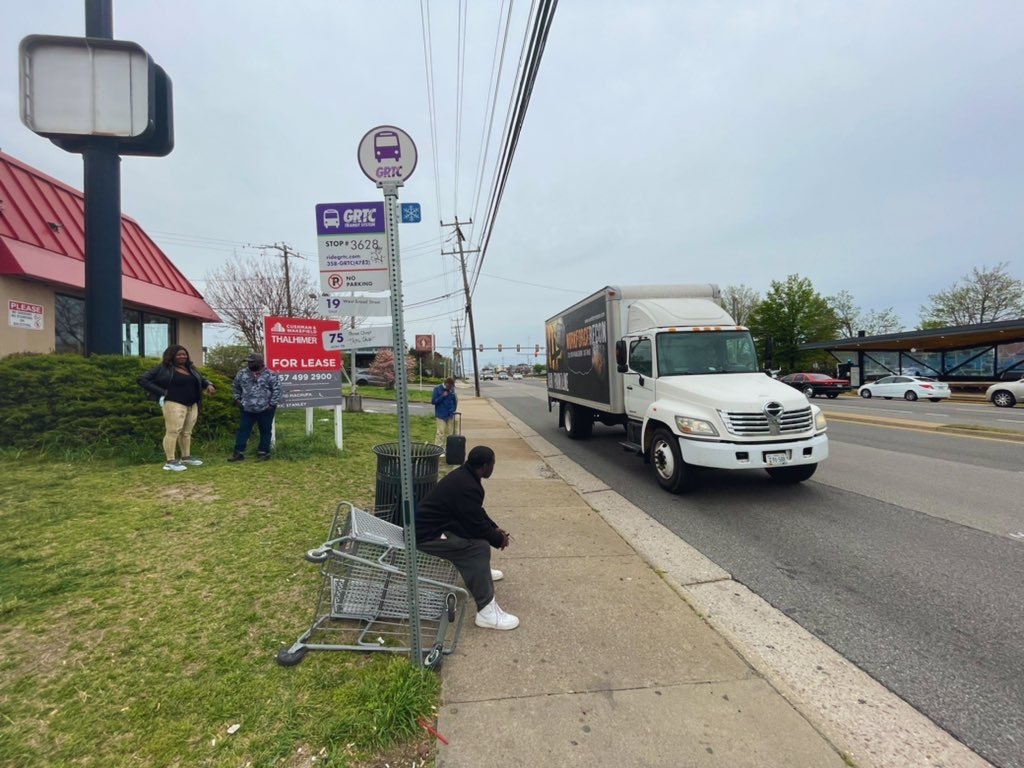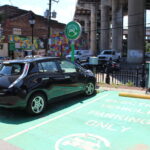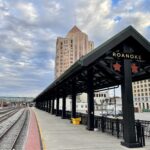10 Key Findings for Modern, Equitable Transit

A man sitting on a shopping cart due to there being no basic transit infrastructure at a bus stop. Photo by Wyatt Gordon.
Safe, reliable public transportation is essential to ensuring that all Virginians have access to basic necessities like groceries, healthcare, schools, and jobs.
High-quality public transit is a key tool to meet the Commonwealth’s climate goals. However, our public transit systems are severely underfunded, leaving many Virginians with few or unsafe options for moving around their communities without a car. In 2018, riders of Hampton Roads Transit (HRT) suffered 18,653 scheduled buses that never showed up.
With the dramatic inflation of gas and vehicle costs, this is the time where fast and frequent public transit is most critical to ensure mobility for all, protect public health, meet our climate goals, and lower household costs.
Key Findings: Transit Equity and Modernization Study
Virginia’s Department of Rail and Public Transportation (DRPT) conducted a Transit Equity and Modernization Study and recently published the results this past August 2022. The report includes near-, mid-, and long-term action plans with the purpose of promoting transit modernization and equity across the Commonwealth (see pages 36-48). It addresses accessibility, adequacy of infrastructure, electrification, emerging technologies, safety, and system engagement and governance.
Here are the ten key findings from the study:
- Many bus stops are poorly placed and not well-connected to sidewalks.
- Basic transit infrastructure, like shelters, seating, and lighting, is inconsistent across Virginia.
- Those who use public transit the most are often not included in the decision-making process.
- There is strong interest in transitioning to zero-emission transit vehicles, such as electric or fuel cell electric buses, across Virginia transit agencies.
- About half of Virginia’s transit agencies are interested in zero-fare transit services to overcome transit accessibility-related barriers. Read up on the Transit Ridership Incentive Program (TRIP) here.
- The availability of transit in Virginia is high, but there is currently a large gap: a lack of fixed-route transit service and access to rural areas. Across the Commonwealth, there are approximately 1.1 million people and 570,000 jobs that are not served by transit.
- Virginia’s transit agencies need to adopt new and emerging technologies, such as the widespread use of contactless fare payment, real-time vehicle tracking, and mobility-on-demand services.
- Transit is among the safest ways to travel, but there remains personal safety and crime concerns for transit riders, operators, and employees.
- Our public transit systems need additional data that is up-to-date, accurate, and reliably consistent to make better, more informed decisions.
- Equity and accessibility must be more heavily considered in guidance, requirements, and funding programs for transit agencies.
Improving Public Transit

Roanoke Train Station. Photo by Wyatt Gordon.
See our policy recommendations in Our Common Agenda Environmental Briefing Book to help Virginia improve its public transit systems.
Thank you to our Network Partners at Virginia Interfaith Power & Light, Chesapeake Climate Action Network, and RVA Rapid Transit for providing expertise on these policy solutions.







